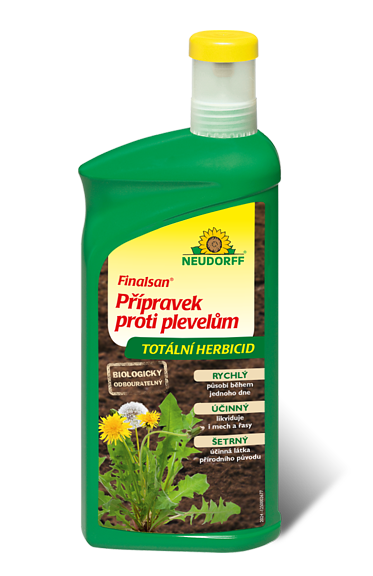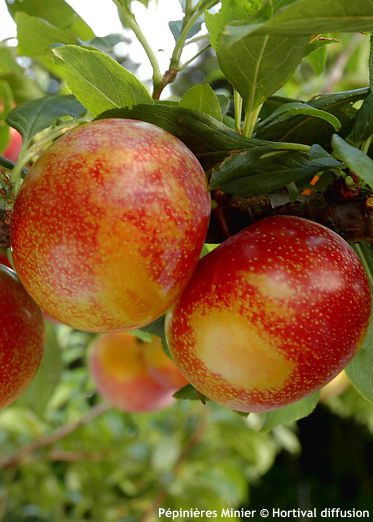Prunus Pluot® 'FLAVOR CANDY' pluot (plum x apricot)
Prunus
When the Japanese plum decided to join forces with the apricot, the result was one of the most delicious experiments in modern fruit breeding – the pluot. This interspecific hybrid, technically referred to as an interspecific plum, carries approximately three-quarters of plum genetics and one-quarter apricot [(Prunus salicina × (Prunus salicina × Prunus armeniaca)) × Prunus salicina]. Its smooth skin, juicy flesh, and sugar content that often surpasses both parents make it a sweet champion among stone fruits. Pluot is no accident of nature, but the result of deliberate breeding perfected in the 1980s by American horticulturist Floyd Zaiger (1926–2017). He built on the work of the legendary Luther Burbank (1849–1926), who at the turn of the century experimented with so-called plumcots – the first plum-apricot hybrids. While Burbank’s creations were too delicate for commercial cultivation, Zaiger went further: he crossed plumcot with plum, creating a new generation of hybrids now known under the trademarked name Pluot®.
If Luther Burbank opened the door to interspecific breeding of stone fruits, Floyd Zaiger flung it wide open with tireless precision. His lifelong passion was the breeding of fruit trees – especially peaches, nectarines, apricots, cherries, and plums – with the goal of creating varieties with better flavour, longer shelf life, and improved climate adaptability. In his family-run company Zaiger’s Genetics, based in Modesto, California, he developed over 400 patented cultivars, all through traditional crossbreeding – without genetic modification. Zaiger considered the pluot his greatest achievement: the result of thousands of hand-made crosses was a fruit that not only tasted better than its parents but could also be grown and shipped on a commercial scale. Unlike the plumcot, which is a direct cross between plum and apricot, the pluot is the result of repeated backcrossing of plumcot with plum, giving it a distinctly plum-like character – smooth skin, intense colour, and sugar levels often exceeding 20 °Brix.
Pluot® Flavor Candy® is one of those cultivars whose name doesn’t lie – its fruits truly taste like fruity candy. It was introduced in 1988 as part of Zaiger’s targeted breeding program and remains one of the most balanced pluots for both home gardens and commercial orchards. The fruit has a smooth, bicolored skin – initially yellow with a reddish-purple blush, turning deep purple as it ripens. The flesh is bright yellow, very sweet, juicy, and aromatic, with sugar levels exceeding 20 °Brix. The flavour resembles apricot soaked in plum syrup, without any bitterness. The fruits ripen at the end of July, usually between the 20th and 31st of the month. You can tell they’re ripe by their deep purple skin and a slight softness when gently squeezed – that’s when the flavour is most intense. Thanks to their firm skin, tolerate short-term storage and transport – they keep well in the refrigerator for up to two weeks without losing flavour. They taste best chilled, when their aroma intensifies, but they’re also excellent in pies, jams, or paired with cheese.
The tree grows moderately vigorously, forming a compact crown and reaching about 2.5 meters in height. In the first years, it’s advisable to stake the tree, as young shoots are soft and prone to bending in the wind. It blooms in April with pale pink flowers that are self-fertile, though the presence of other cultivars – such as Golden Japan or Flavor Supreme – significantly increases fruit set. It is mostly grafted onto the Citation rootstock, which ensures semi-dwarf growth, early fruiting, and good adaptation to moist soils. In Central European conditions, the Myrobalan rootstock has also proven effective, especially in heavier or drier soils – though it tends to produce suckers, which must be regularly removed to prevent weakening the tree. The tree is suitable for large containers if watered and fertilized regularly, though fruit yield may be lower in such conditions.
Pluot requires a sunny location, sheltered from strong or persistent winds, and deep, well-drained soil with a pH between 6.0 and 7.0. It does not tolerate waterlogging, so in heavier soils, drainage or raised beds are necessary. The tree grows moderately vigorously; staking is recommended in the early years. Regular watering during dry periods and balanced fertilization support healthy growth and fruit production. Its cold hardiness ranges from –27 to –29 °C (USDA zone 5), making it suitable for cultivation in most parts of Central Europe. The tree is not prone to disease, though in wet years it may be sensitive to brown rot (Monilinia). As for pruning, opinions vary, but we recommend occasional summer thinning of overcrowded branches to maintain an airy crown. The seeds inside the pits contain trace amounts of amygdalin and should not be consumed.
Last update 20-10-2025


































.jpg)


